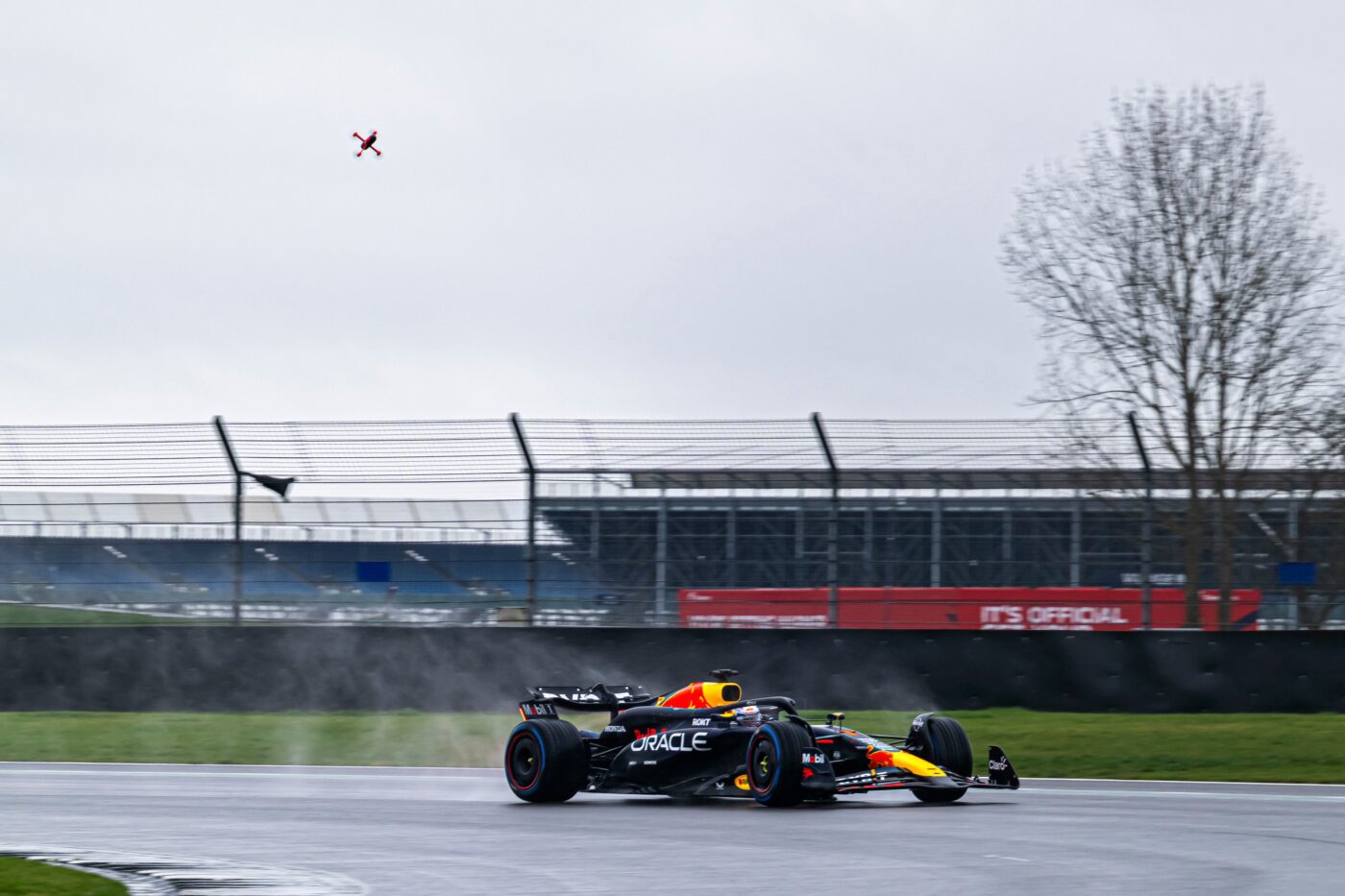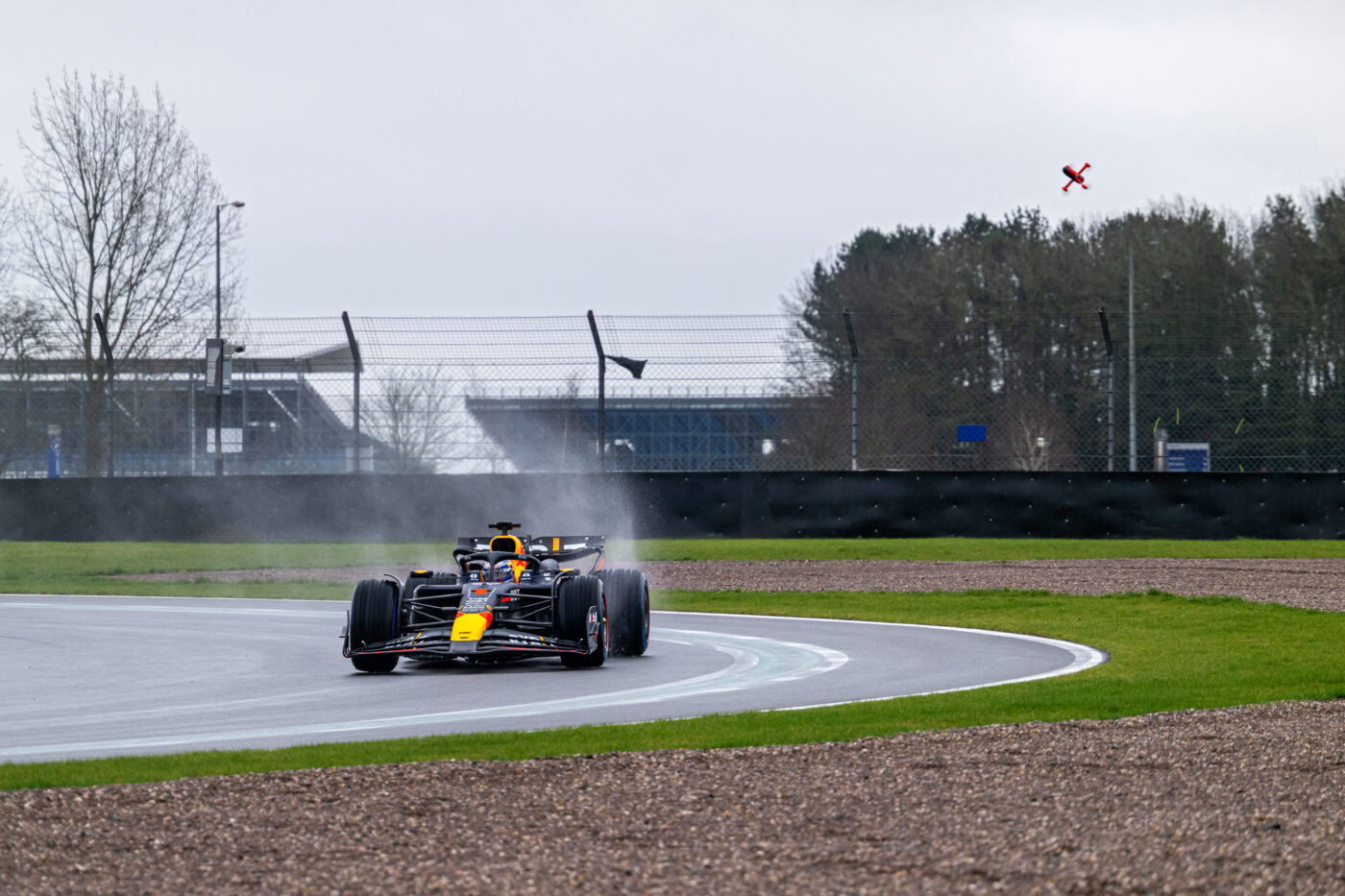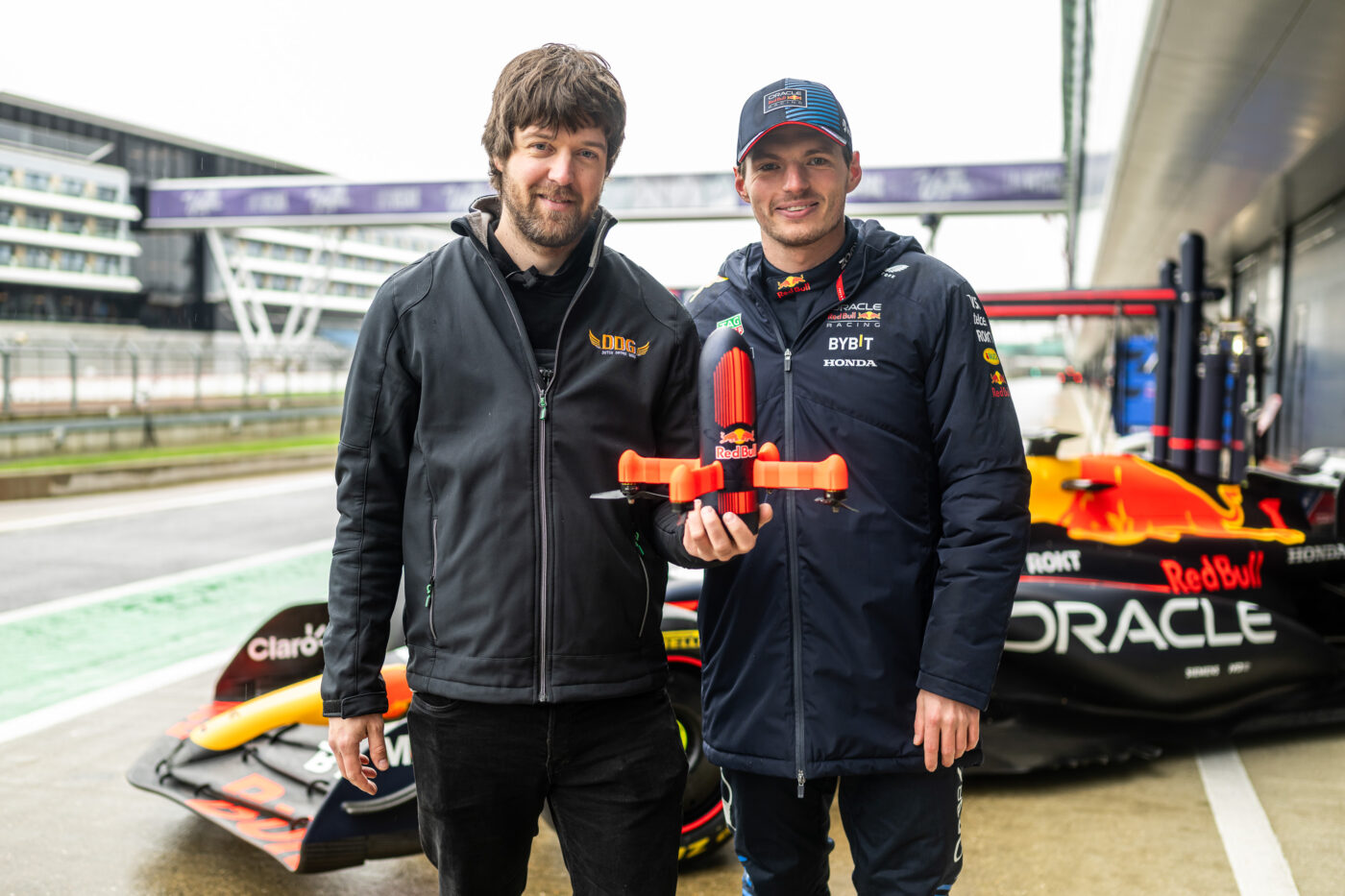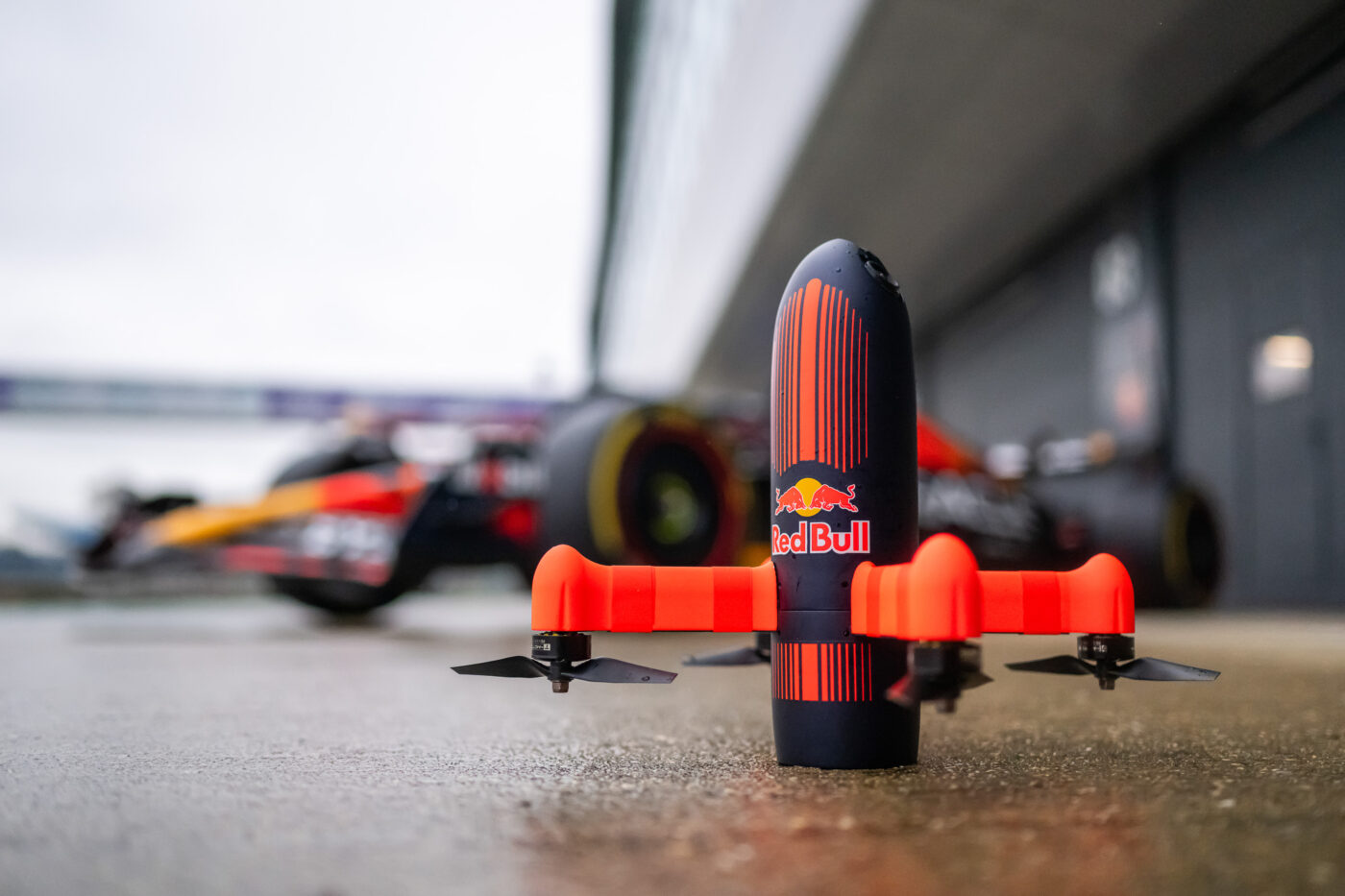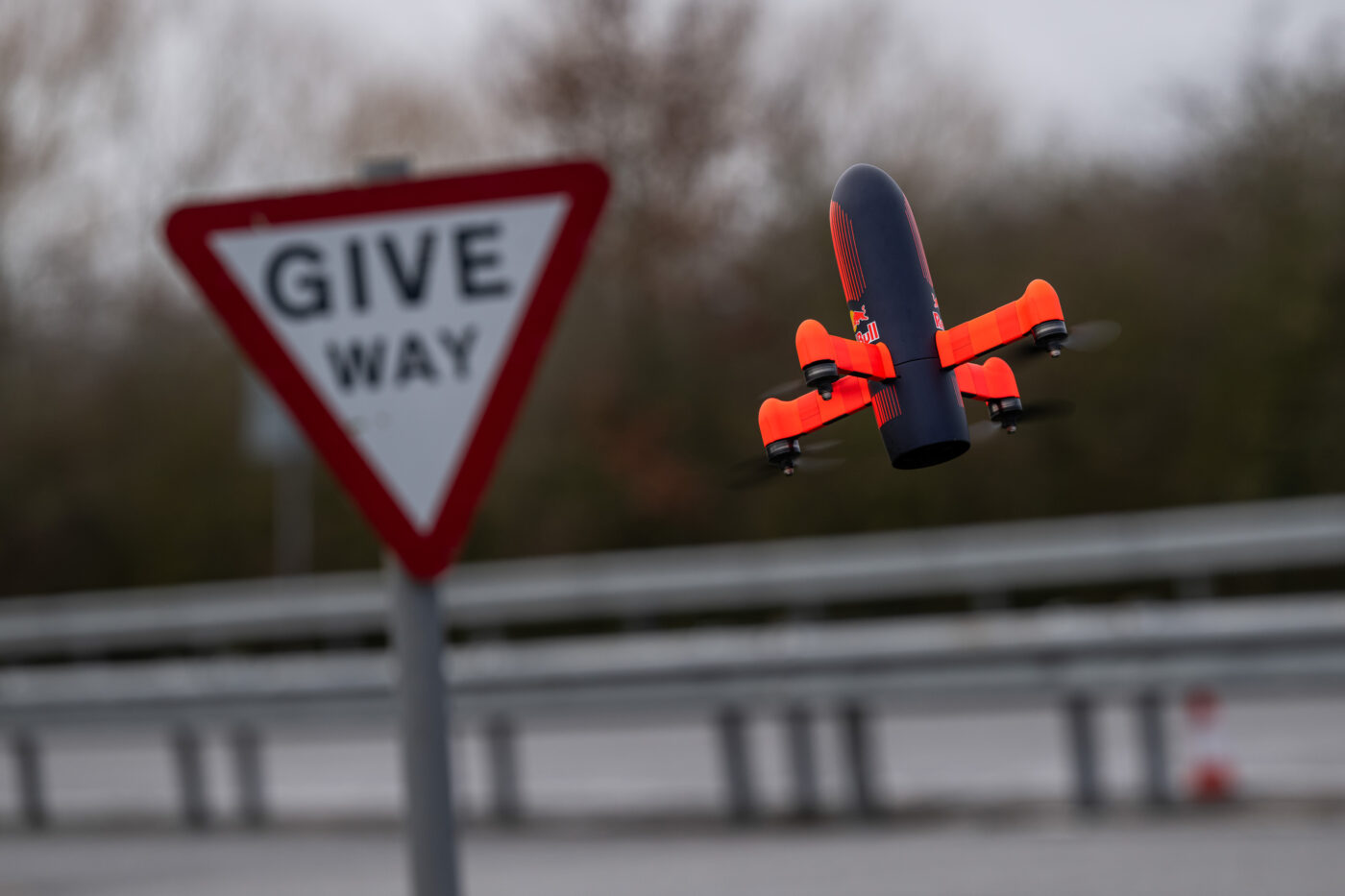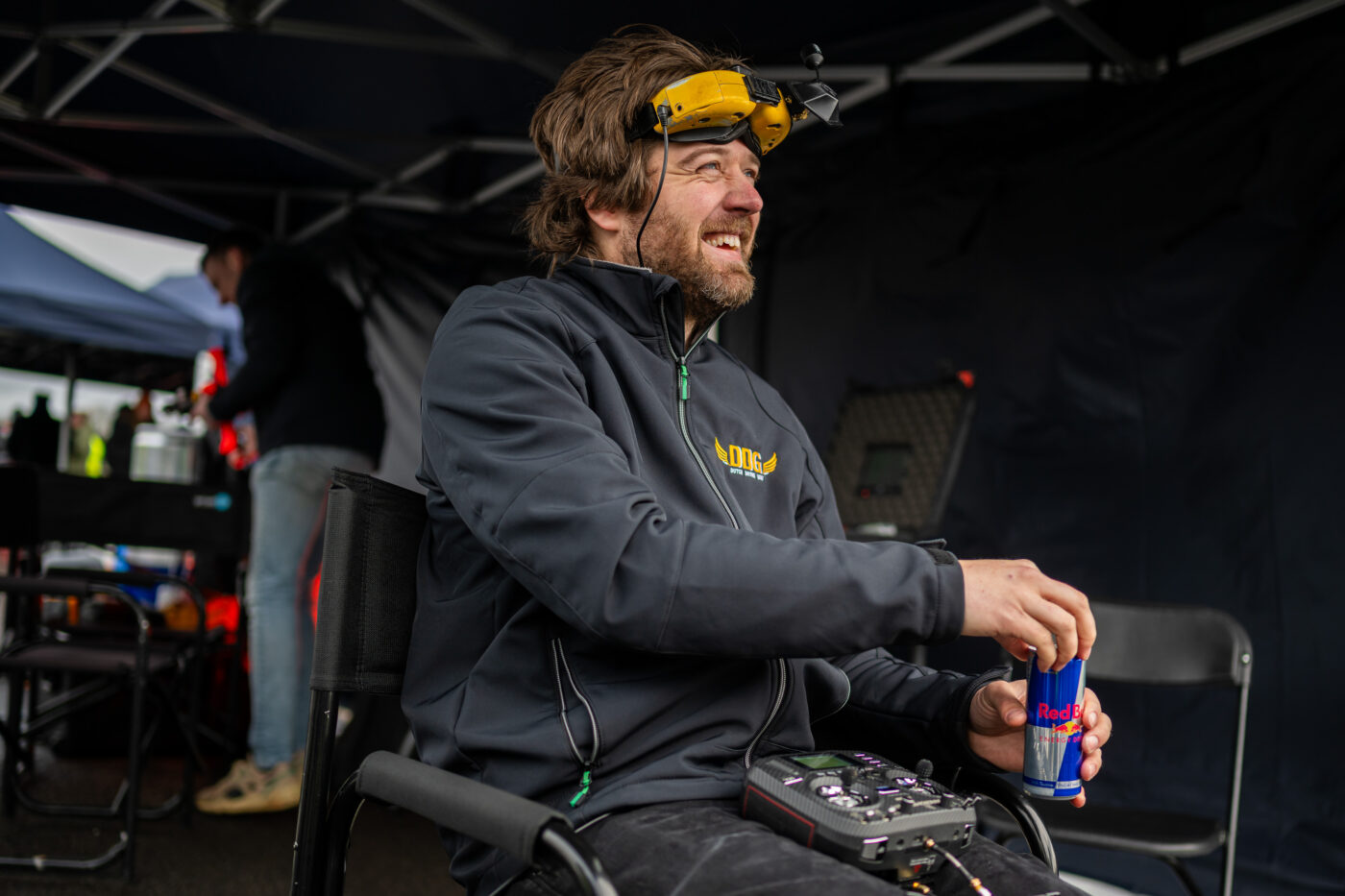New technology invented by Dutch team ‘Dutch Drone Gods’ delivers the fastest FPV drone single shot, following Max Verstappen’s brand new Oracle Red Bull Racing RB20 for a full lap of the Silverstone Circuit.
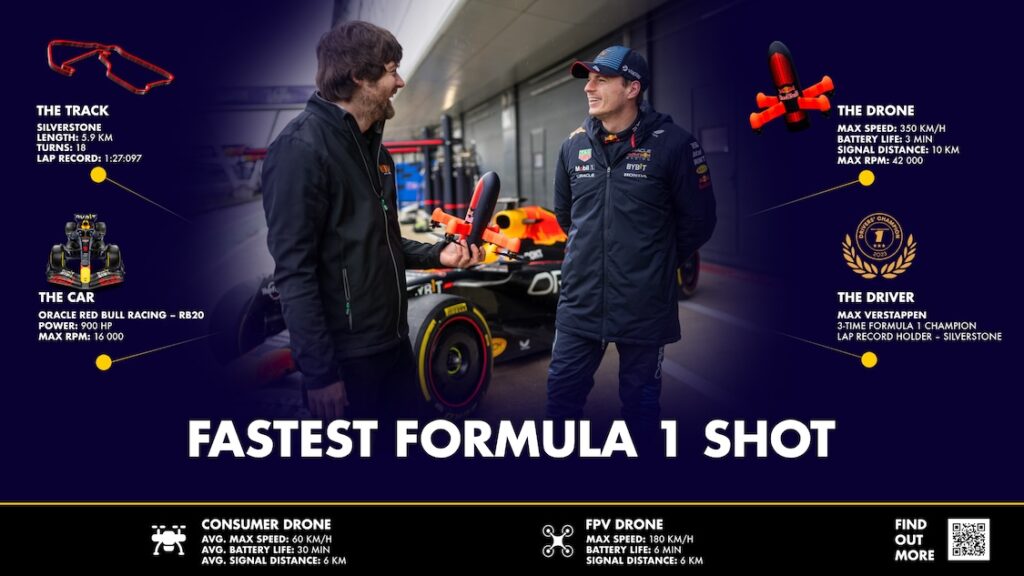
The uninterrupted first-person-view (FPV) footage of the 3-time Formula 1 World Champion Max Verstappen’s full lap of the Silverstone Grand Prix circuit, was shot with manually piloted drone custom-built for this purpose. Bringing viewers up close and personal with the 2024 car, it was the first time a camera drone has successfully flown at such speed and duration capturing high-definition video.
“I never thought I’d see a drone going that quick just for camera footage.” Max Verstappen said after seeing it in action at Silverstone circuit.
“I didn’t know it was following me whilst driving in the wet and it was very close to me in some places. I was really surprised at how quickly it could keep up, also how close it could get in the corners. It gives a bit of a different perspective to watching Formula One.”
It took over a year to create a drone that can accelerate two times faster than an F1 car, reaching 300 km/h in just 4 seconds with a top speed of over 350 km/h. Dutch Drone Gods and pilot Ralph Hogenbirk, a.k.a Shaggy FPV have been preparing for a lap behind countryman Verstappen with multiple flight simulations and first concepts drawn in their Eindhoven workshop.
The development was accelerated by access to know-how and the processes of Red Bull Advanced Technologies, a high-performance engineering arm of Oracle Red Bull Racing Formula 1 team. The advanced technologies company designed and manufactured lightweight aerodynamic fairings and structural motor mount arms, to help reduce the total mass of the drone by approximately 10%.
This progress was trialed by actual tests at Formula 1 tracks with RB8 and RB19 cars driven by reserve driver Liam Lawson and 13-time Grand Prix winner turned broadcaster, David Coulthard.
“When you see the big, wide, shots you lose perspective on the speed of the car. There are so many applications to really give the fans the feeling of what it’s like to be in one of these race cars. When you have the drone up close like that then you’re immersed in the whole experience. I’m sure in the not-too-distant future, we’re going to see this as part of our broadcast,” said David Coulthard.
The Pilot is navigating the drone’s flight route with a radio controller, observing the flight path only through FPV goggles transmitting low-resolution drone’s eye view. The camera angle is then adjusted simultaneously with a foot pedal, requiring precision in hand-to-eye coordination to deliver a smooth close-up shot of an F1 car going over 300 km/h – completely new challenge for the pilot.
Having previously piloted a variety of FPV drones following MTB bike athletes in events like Red Bull Cerro Abajo, keeping up with the Formula 1 car going at full speed was a new challenge for Shaggy FPV & technology in terms of cornering, acceleration and deceleration, battery life, connectivity between the drone, receiver and the pilot as well as going over bridges, under billboards.
“This is a special drone because this is the only one with a fitted camera and goes this fast. It’s fully custom built, it’s one-of-a-kind that we have developed. It is a very challenging project to create a drone that’s fast enough to keep up and keep the car in full frame, whilst capturing the shot in an interesting way,” commented the drone pilot Shaggy FPV. “This was definitely the craziest shoot I’ve done so far.”
Not only was it a challenge for the pilot to stay close to the RB20, while also negotiating obstacles such as bridges around the circuit, there were also significant technical challenges for the drone.
While the average consumer drones travel around 60 km/h, with an approximate battery life of 30-minutes, the drone, designed to chase the RB20, needed to fly with the agility of an F1 car. This meant it needed big accelerations and decelerations, both of which significantly reduced battery life to around 3-minutes. They were challenges not lost on Verstappen as he watched the footage of the drone behind his car.
“For the pilot there are a lot of things that you need to take into account, for example avoiding bridges and to anticipate our braking points, as we have a brake pedal but in the air it works differently. So, it’s very stressful I think to be that focussed,” commented the 3-time Formula 1 champion Max Verstappen.
Watch the Fastest Formula 1 shot HERE
AVAILABLE CONTENT
– Videos / Photos / Press Release
–> via RED BULL CONTENT POOL
Contact: Fabian Ress
fabian.ress@3mpg.ch / +49 173 248 8404
_______
Images free of charge for editorial use.
Credit: Red Bull Content Pool

